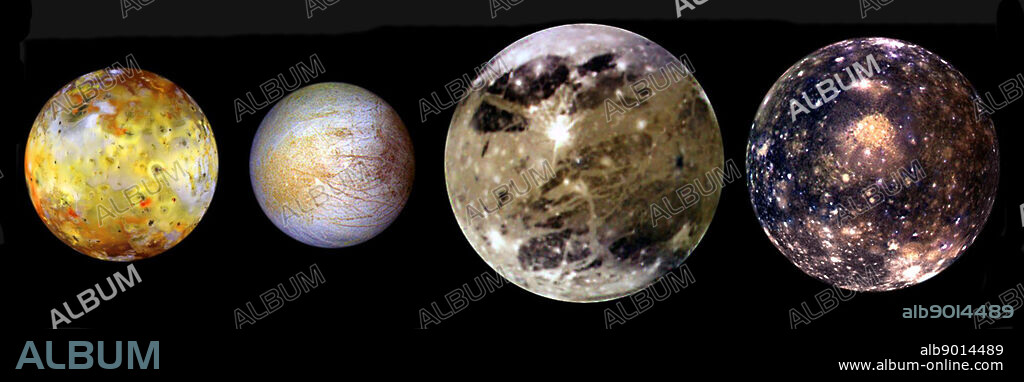alb9014489
four moons of Jupiter are shown to scale. These four largest moons of Jupiter shown in increasing distance from Jupiter are (left to right) Io, Europa, Ganymede, and Callisto. These global views show the side of volcanically active Io which always faces away from Jupiter, icy Europa, the Jupiter-facing side of Ganymede, and heavily cratered Callisto. Io, which is slightly larger than Earth's moon, is the most colourful of the Galilean satellites. Its surface is covered by deposits from actively erupting volcanoes, hundreds of lava flows, and volcanic vents which are visible as small dark spots. Calisto's dark surface is pocked by numerous bright impact craters.

|
Ajouter à une autre Lightbox |
|
Ajouter à une autre Lightbox |



Avez-vous déjà un compte? S'identifier
Vous n'avez pas de compte ? S'inscrire
Acheter cette image.
Sélectionnez l'usage:

Légende:
Voir la traduction automatique
four moons of Jupiter are shown to scale. These four largest moons of Jupiter shown in increasing distance from Jupiter are (left to right) Io, Europa, Ganymede, and Callisto. These global views show the side of volcanically active Io which always faces away from Jupiter, icy Europa, the Jupiter-facing side of Ganymede, and heavily cratered Callisto. Io, which is slightly larger than Earth's moon, is the most colourful of the Galilean satellites. Its surface is covered by deposits from actively erupting volcanoes, hundreds of lava flows, and volcanic vents which are visible as small dark spots. Calisto's dark surface is pocked by numerous bright impact craters.
Crédit:
Album / World History Archive
Autorisations:
Taille de l'image:
8029 x 2580 px | 59.3 MB
Taille d'impression:
68.0 x 21.8 cm | 26.8 x 8.6 in (300 dpi)
Mots clés:
ASTRONOMIE • ASTRONOMIE: PLANETES • COSMOS • EXPLORATION • JUPITER • PLANETE • PLANÈTES • SCIENCE: ASTRONOMIE • SOLAIRE
 Pinterest
Pinterest Twitter
Twitter Facebook
Facebook Copier le lien
Copier le lien Email
Email
